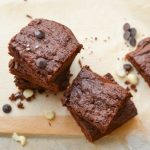Weak immune system? It’s probably your diet

Our immune system is continually working to defend us from infection. The army of immune cells work with a coordinated precision to identify and eliminate infectious agents, both bacteria and viruses. These two main attackers, while wholly different in structure and method of attack, have one important attribute in common—they both rely on glucose for their fuel.
When an infectious organism is trying to work through our bodies, they need a lot of fuel. Like every cell, these pathogens (e.g., bacteria and viruses) use nutrients to create cellular energy to enable them to replicate and grow in the body. Growth requires energy and a lot of it.
The Metabolism of Bacteria
Most cells in the human body are energetic hybrids—they can use various energy sources, mostly from fats and glucose, but also from fringe fuels, like ketones. Bacteria are limited by a metabolic engine that can only be fueled by glucose. So even though bacteria may be surrounded by fats and ketones, they only use the glucose. And they use it well, burning glucose at a much higher rate than the body’s cells. With this in mind, it should be little surprise that if bacteria have access to a lot of glucose during their attack on the body, the attack goes much better than it should. In fact, people with chronically high glucose levels are much more likely to experience frequent and even serious bacterial infections [1]. Moreover, high glucose levels make bacteria more resistant to our immune defenses—it takes our bodies much longer to eliminate them [2]. And even when bacteria are too few in number to normally cause a problem, high glucose levels can give them the spark they need, inciting them to attack [3].
The Metabolism of Viruses
Viruses are unique—they’re basically small proteins that invade a cell and hijack all of the cell’s capabilities to create more versions of itself, essentially turning the cell in a virus-producing factory. In the process of taking over a cell, a virus is able to utilize the energetic diversity of the mitochondria. The mitochondria are the site of “burning”—they burn glucose, fats, and ketones to provide a cell with energy. However, even though the virus has access to the metabolic variety that comes along with mitochondrial, they still rely almost wholly on glucose burning to fuel the replication and infection [4]. Despite the wide variety of viruses, the reliance on glucose is a consistent theme [5-7]. Once again, this is very much at the heart of why people with chronically elevated glucose are so much more susceptible to viral infections of the past and present [8, 9].
All of this focus on glucose, while sobering, is also encouraging—with a common energetic reliance of bacteria and viruses on glucose, we have a singular metabolic focus: control glucose. In fact, this strategy is generally so successful, that even in the midst of the current viral pandemic, biomedical scientists are increasingly united in the value of lowering glucose as a means to mitigate the severity of the virus [10]. And rightly so; a persistent theme across many infections is that people with poor metabolic health are more likely to experience serious infections. In fact, recently, over 90% of all serious infections occur in people with at least one pre-existing medical condition, with the top pre-existing conditions all being “metabolic” [11].
Fanning the Flames
There are several stimuli that drive up glucose, enabling an infection to thrive, ranging from subtle to serious. On the subtle end is stress. Stress from emotional anxiety or sleep deprivation creates an upward pressure on blood glucose levels. This is entirely a result of the two prototypical stress hormones: cortisol and adrenaline [12]. Despite their profound differences when it comes to what each does within our bodies, they share a metabolic purpose when it comes to glucose—they push it up.
The most relevant of variable with blood glucose levels is the food we eat. In particular, dietary carbohydrates provide direct glucose into the blood, pushing it up 50% to 100% over normal and keeping it there for hours. Of course, some carbohydrates do this more dramatically than others, with the more processed carbohydrates being the biggest offenders. Tragically, the frequent and large glucose spikes, with concomitant spikes in insulin, only make the problem worse—this drives insulin resistance, making it harder for the body to clear the glucose from the blood [13]. However, while body cells, like the muscle or the brain, may have a harder time taking in the glucose, bacteria and infected cells have no such trouble—they don’t need insulin at all [14].
Cutting the Fuel Lines
The key variable in addressing the metabolic origins of feeding infections is clearly lowering blood glucose by controlling carbohydrates in the diet. Indeed, lowering blood glucose levels is a known therapeutic strategy for cutting prominent bacterial and viral infections [15-18].
Take-away Thoughts
A prudent dietary strategy is simple: control carbohydrates. The more you get carbs from a bag or box with a barcode, the more you’re likely spiking blood glucose levels, potentially fanning the flames of an infection. Be starch smart by focusing more on fruits and vegetables, and cutting back on refined grains and sugars. Current efforts to mitigate the spread of viral infections are likely valuable, but infection is usually unavoidable for most people. By controlling your glucose levels, you can have some confidence that you’ll help your immune system by limiting the metabolic fuel for the infection.
References
- Gupta, S., et al., Infections in diabetes mellitus and hyperglycemia. Infect Dis Clin North Am, 2007. 21(3): p. 617-38, vii.
- Hunt, W.R., et al., Hyperglycemia impedes lung bacterial clearance in a murine model of cystic fibrosis-related diabetes. Am J Physiol Lung Cell Mol Physiol, 2014. 306(1): p. L43-9.
- Kraft, R., et al., Bacterial respiratory tract infections are promoted by systemic hyperglycemia after severe burn injury in pediatric patients. Burns, 2014. 40(3): p. 428-35.
- Sanchez, E.L. and M. Lagunoff, Viral activation of cellular metabolism. Virology, 2015. 479-480: p. 609-18.
- Fontaine, K.A., et al., Dengue virus induces and requires glycolysis for optimal replication. J Virol, 2015. 89(4): p. 2358-66.
- Passalacqua, K.D., et al., Glycolysis Is an Intrinsic Factor for Optimal Replication of a Norovirus. mBio, 2019. 10(2).
- Dunn, D.M., et al., Human Cytomegalovirus Induces the Expression of the AMPKa2 Subunit to Drive Glycolytic Activation and Support Productive Viral Infection. J Virol, 2020.
- Rayfield, E.J., et al., Infection and diabetes: the case for glucose control. Am J Med, 1982. 72(3): p. 439-50.
- Codo, A.C., et al., Elevated Glucose Levels Favor SARS-CoV-2 Infection and Monocyte Response through a HIF-1alpha/Glycolysis-Dependent Axis. Cell Metab, 2020. 32(3): p. 437-446 e5.
- Mansouri, K., et al., Can a metabolism-targeted therapeutic intervention successfully subjugate SARS-COV-2? A scientific rational. Biomed Pharmacother, 2020. 131: p. 110694.
- Richardson, S., et al., Presenting Characteristics, Comorbidities, and Outcomes Among 5700 Patients Hospitalized With COVID-19 in the New York City Area. JAMA, 2020. 323(20): p. 2052-2059.
- Lee, A.S., Mammalian stress response: induction of the glucose-regulated protein family. Curr Opin Cell Biol, 1992. 4(2): p. 267-73.
- Zhang, A.M.Y., et al., Hyperinsulinemia in Obesity, Inflammation, and Cancer. Diabetes Metab J, 2021. 45(4): p. 622.
- Thorens, B., Molecular and cellular physiology of GLUT-2, a high-Km facilitated diffusion glucose transporter. Int Rev Cytol, 1992. 137: p. 209-38.
- Zerr, K.J., et al., Glucose control lowers the risk of wound infection in diabetics after open heart operations. Ann Thorac Surg, 1997. 63(2): p. 356-61.
- Tregoning, J.S. and P. Mallia, Modulating airway glucose to reduce respiratory infections. Expert Rev Respir Med, 2019. 13(2): p. 121-124.
- Gangitano, E., et al., Ketogenic Diet as a Preventive and Supportive Care for COVID-19 Patients. Nutrients, 2021. 13(3).
- Ryu, S., et al., Ketogenic diet restrains aging-induced exacerbation of coronavirus infection in mice. Elife, 2021. 10.
This article is for informational and educational purposes only. It is not, nor is it intended to be substitute for professional medical advice, diagnosis, or treatment and should never be relied upon for specific medical advice.


















